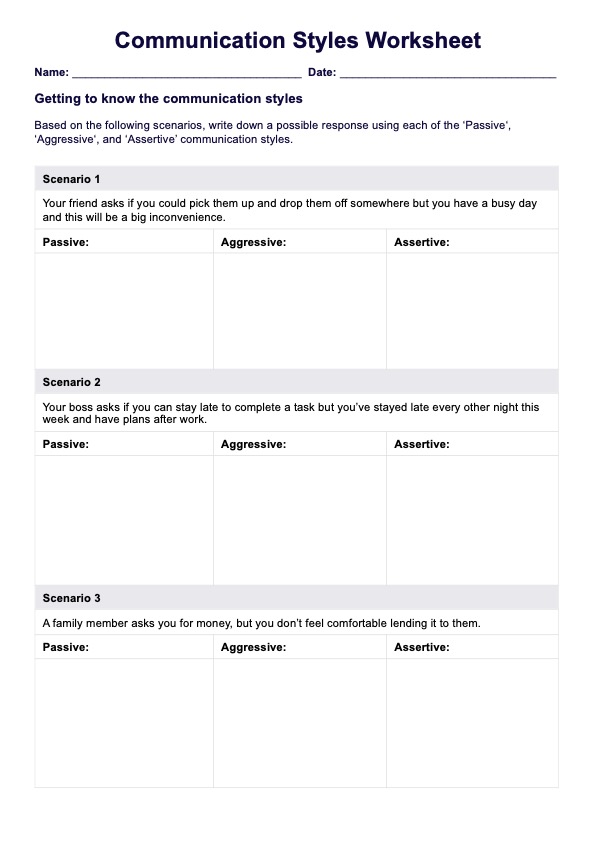A communications style worksheet is a resource that therapists use to engage their clients in their care and guide them toward their treatment goals. These worksheets can vary in their content depending on the client’s specific needs, and ours encourages clients to consider different responses according to each communication style, as well as reflecting on their own day-to-day experiences.

Communication Styles Worksheets
Download our communication styles worksheet and encourage your clients to reflect on their methods of communication. With this tool, your clients will achieve their desired outcomes and quickly become apt communicators.
Communication Styles Worksheets Template
Commonly asked questions
When you choose to distribute the communication styles worksheet is entirely up to you. This worksheet is likely to be beneficial regardless of your client’s age of the severity of their condition, so we would recommend giving it to any clients that are having difficulties with their communication. Because the worksheet can effectively inform treatment plans, we also think it is a good idea to give it to your clients as early on in their treatment process as possible.
The communication styles worksheet should be primarily completed by clients. It is likely that you’ll have to go through each of the different styles with your clients and explain how they each work, but the responses included on the worksheet should come directly from your clients.
EHR and practice management software
Get started for free
*No credit card required
Free
$0/usd
Unlimited clients
Telehealth
1GB of storage
Client portal text
Automated billing and online payments











